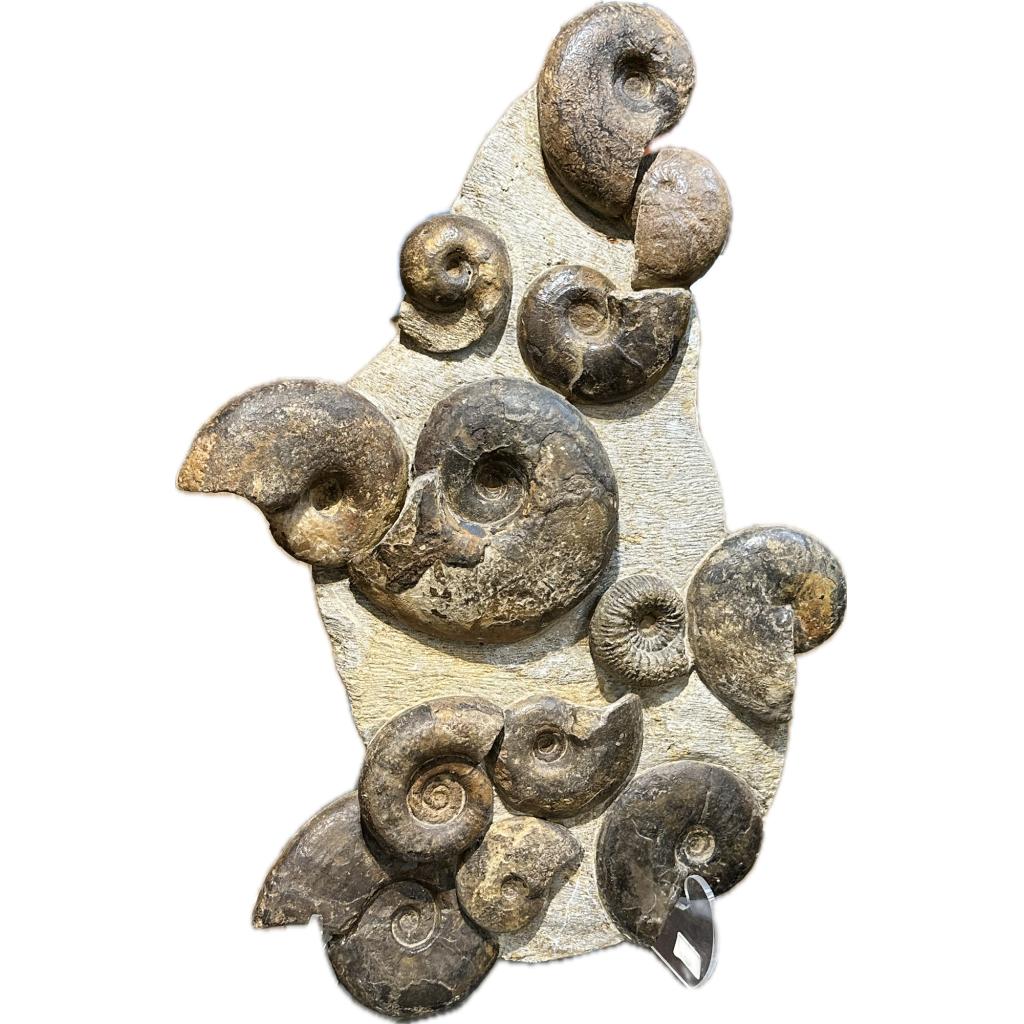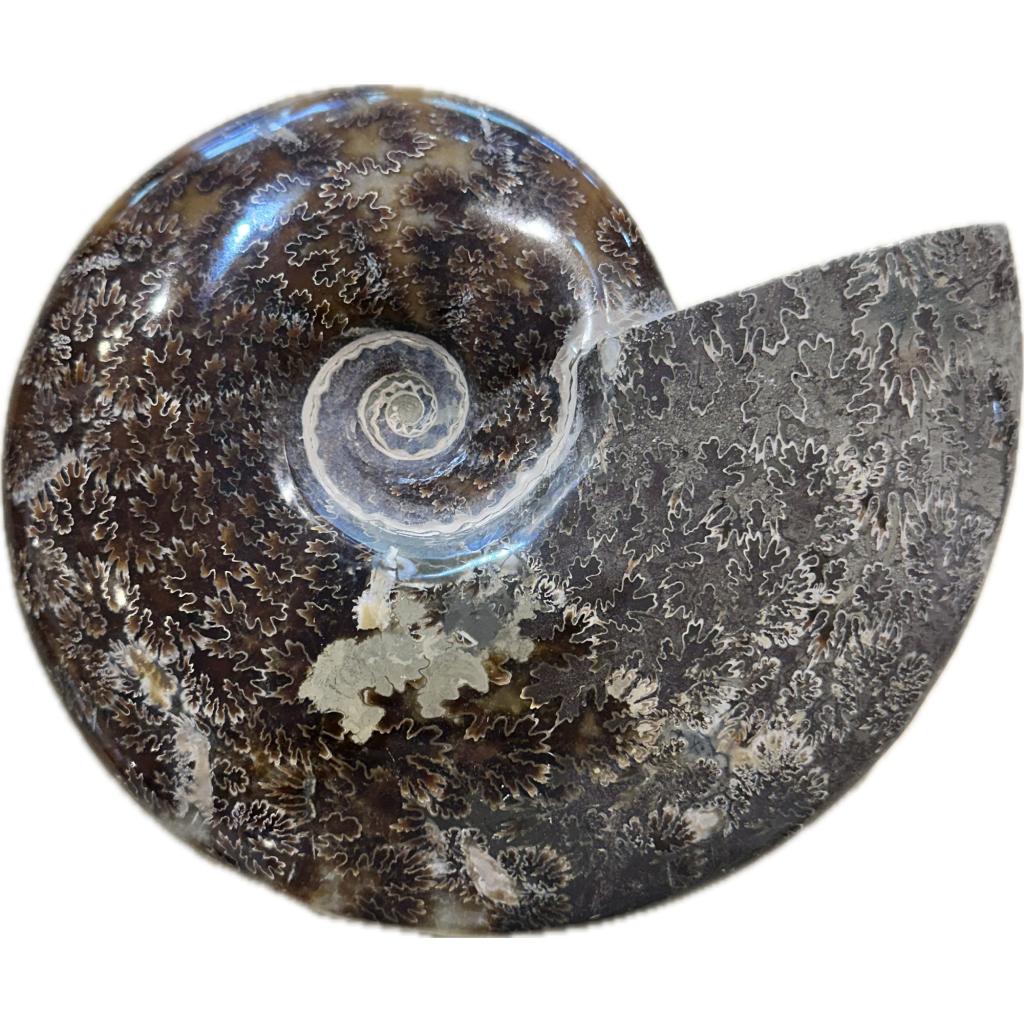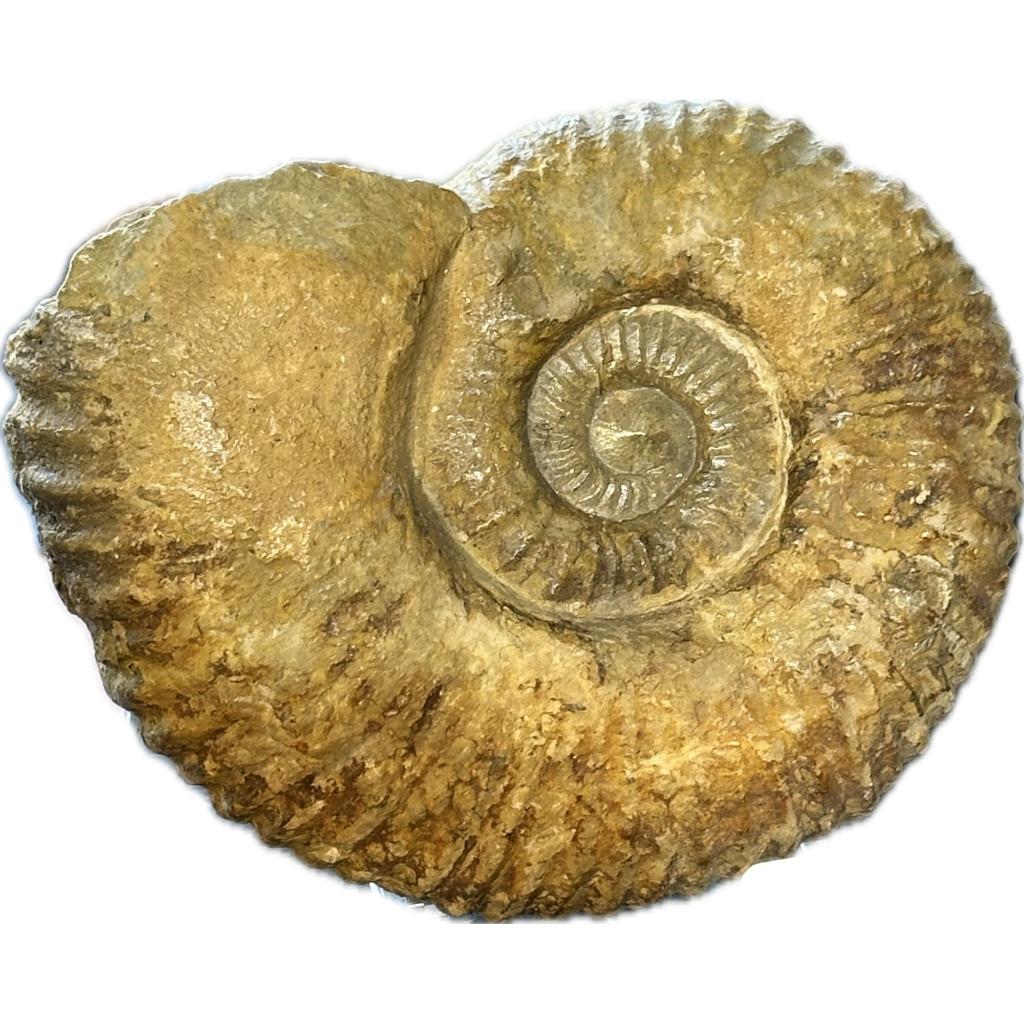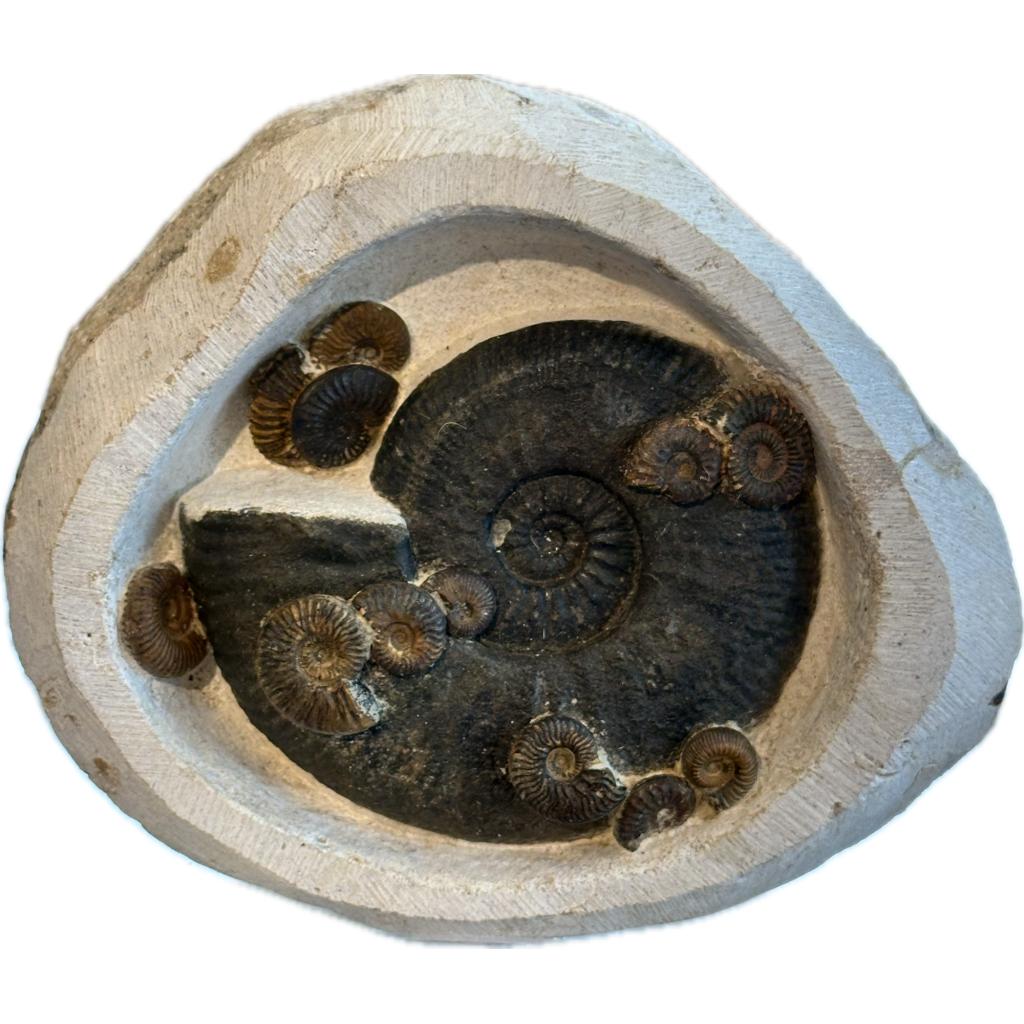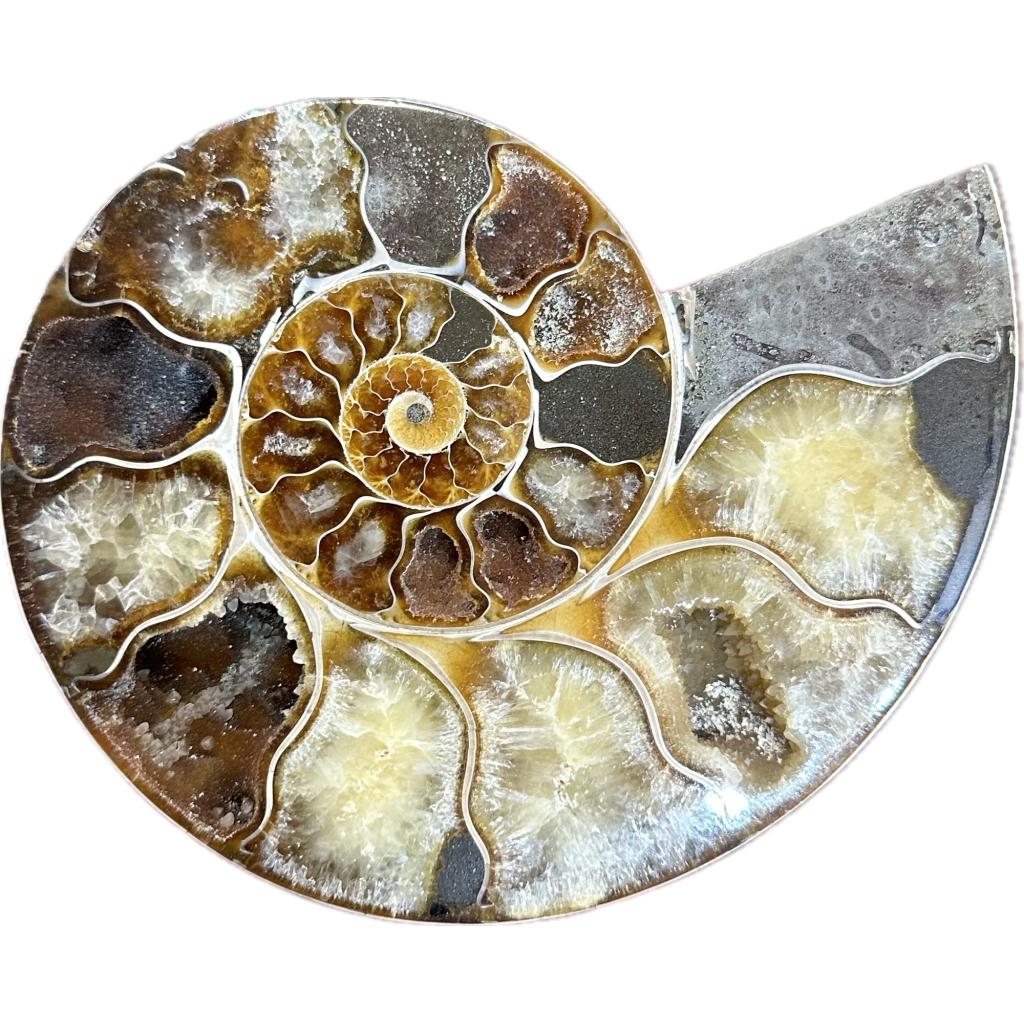
Ammonites are an extinct group of marine mollusks that thrived in Earth’s oceans for millions of years. These fascinating creatures left behind an extensive fossil record that provides valuable insights into the evolution of marine life. The name “ammonite” is derived from the spiral shape of their shells, which resembles tightly coiled rams’ horns. Ammonites belong to the class Cephalopoda, which includes modern-day squids, octopuses, and nautiluses.
Geological Timeframe and Distribution: Ammonites first appeared around 400 million years ago during the Devonian period and became extinct around 66 million years ago, at the end of the Cretaceous period, coinciding with the mass extinction that wiped out the dinosaurs. Their fossils have been discovered on every continent, providing paleontologists with a comprehensive view of the changing marine environments throughout Earth’s history.
Anatomy and Shell Structure: Ammonites had a coiled, chambered shell that served multiple purposes. The chambers were interconnected by a tube called the siphuncle, which allowed the animal to control its buoyancy by adjusting the gas-to-liquid ratio in the chambers. As the ammonite grew, it added new chambers to its shell, creating a distinct pattern visible in fossil specimens.
The outer surface of ammonite shells often featured intricate patterns of ridges, nodes, and sutures (lines where the chambers meet), which vary among different species. These unique shell characteristics make ammonite fossils valuable for classification and identification.
Diverse Species: The vast diversity of ammonite species is a testament to their evolutionary success and adaptability. Over the millions of years of their existence, ammonites evolved into a wide array of shapes and sizes. Some had tightly coiled, symmetrical shells, while others had loosely coiled or even uncoiled shells. The size of ammonites ranged from a few centimeters to over two meters in diameter.
One notable group of ammonites is the ammonitida, which includes some of the largest and most well-known species. Genera like “Parapuzosia” and “Titanites” boasted impressive sizes, with some reaching diameters of more than a meter. These large ammonites were likely formidable predators in the ancient oceans, preying on smaller marine organisms.
In addition to size, ammonites also varied in terms of shell ornamentation. Some species had smooth shells, while others exhibited intricate patterns and spines. The diversity in ammonite morphology reflects the different ecological niches they occupied and their adaptations to various marine environments.
Paleoecology and Behavior: Ammonites were highly mobile marine predators, utilizing their streamlined shells and tentacles to navigate and capture prey. They likely fed on small fish, crustaceans, and other marine organisms. The rapid evolution of ammonite species suggests a dynamic interplay between environmental changes and their adaptive responses.
The fossilized remains of ammonites often provide clues about their interactions with other organisms. In some cases, preserved bite marks on ammonite shells indicate predation by marine reptiles such as ichthyosaurs or plesiosaurs. These fossilized traces contribute to our understanding of ancient marine food webs and predator-prey relationships.
Use in Stratigraphy and Paleoenvironmental Studies: Ammonite fossils are crucial for dating and correlating rock layers in stratigraphy. Different ammonite species existed during specific time intervals, allowing geologists to establish a relative chronology for rock formations. The study of ammonite biozones has become a cornerstone in the subdivision of geological periods and epochs.
Beyond dating, ammonite fossils also provide insights into past climates and oceanic conditions. Certain ammonite species had preferences for specific water depths, temperatures, and substrate types. By examining the distribution of ammonite assemblages in different geological formations, scientists can reconstruct paleoenvironments and track changes in sea levels and oceanic currents over time.
Extinction and Legacy: The end-Cretaceous mass extinction event, which also marked the demise of dinosaurs, had a profound impact on ammonites. The exact causes of their extinction remain a subject of scientific inquiry, with theories ranging from climate change to asteroid impact. Regardless of the cause, the extinction of ammonites left a void in the marine ecosystem that was eventually filled by other cephalopod groups, such as squids and nautiluses.
Despite their extinction, the legacy of ammonites lives on through their fossilized remains. Fossil enthusiasts, collectors, and scientists continue to study and appreciate these ancient marine creatures for the valuable information they provide about Earth’s history. The study of ammonites not only enhances our understanding of prehistoric oceans but also contributes to ongoing discussions about biodiversity, evolution, and the interconnectedness of life on our planet.
